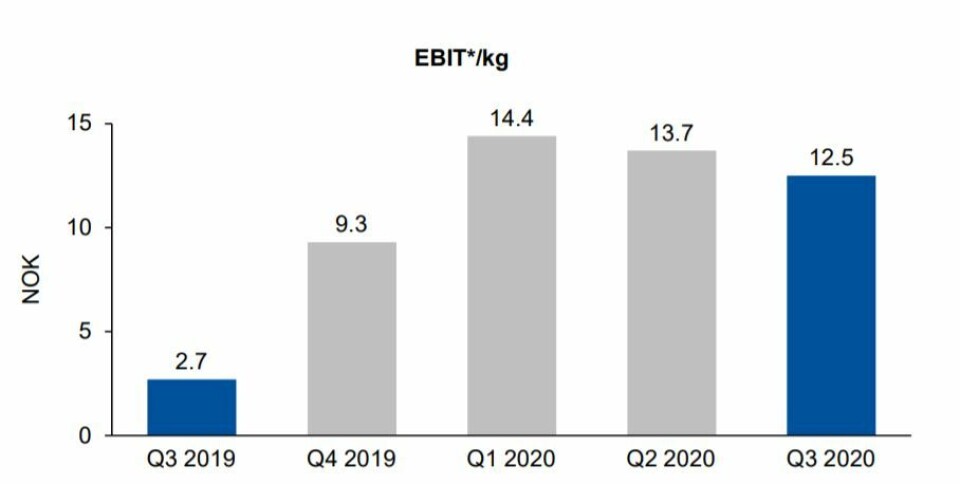
Better fish health and EBIT for Scottish Sea Farms
Scottish Sea Farms made an operating profit of NOK 101 million (£8.43m) in the third quarter of this year, based on good fish growth and biological performance.
That figure for operational EBIT before adjustment for the value of fish in the water is nearly four times the NOK 26.8m made in Q3 last year, when gill health issues casued early harvesting and a reduced average fish weight.
Harvested salmon volume was 8,133 gutted weight tonnes, which was lower than the 9,951 gwt harvested in Q3 2019 but in line with expectations.

36,000 tonnes in 2021
EBIT per kg jumped from NOK 2.7 per kilo in Q3 last year to NOK 12.5 per kilo.
The figures are included in a Q3 presentation by Lerøy, which co-owns SSF with fellow Norwegian salmon farmer SalMar.
Lerøy said SSF expected to harvest 26,000 gwt for 2020, jumping by around 38% to 36,000 gwt next year.
SSF transferred nearly 2 million smolts with an average weight of 147 grams to sea in Q3.

Strong performance
Scottish Sea Farms’ managing director Jim Gallagher said: “2020 has brought challenges that no business could have anticipated, with Covid-19 impacting on the day-to-day running of our farms and our many support services.
“However, as the Q3 results show, we have adapted to and withstood these challenges well, delivering strong fish health and performance and maintaining deliveries to our customers.”
The company has focused strongly on improving fish health and has largely been successful, with a 94% fish survival rate at sea, although problems caused by an algal bloom at Loch Creran in Argyll led to some fish being harvested early.






















































